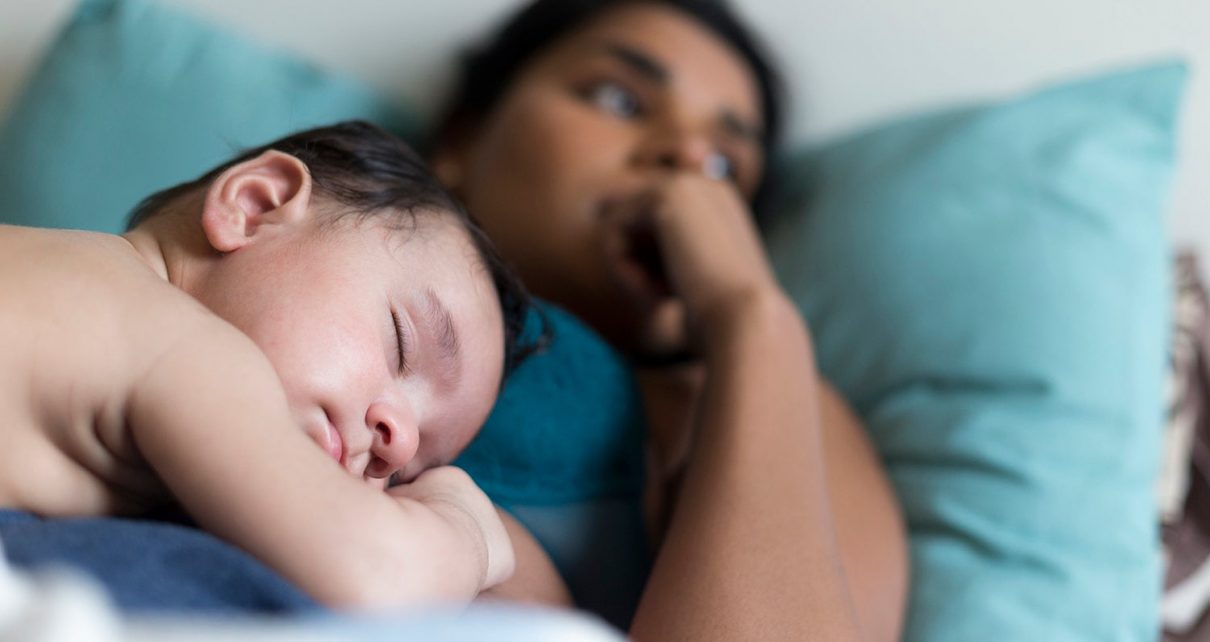Depression and other mood disorders often lack a discernible cause. Like many complex diseases, they emerge as genes and life circumstances interweave in mysterious ways. Less enigmatic, though, is the fact that these conditions affect women about twice as often as men.
Understanding how and why requires a look at the underlying biology—the brain circuits and hormones that translate a person’s genetic makeup and life experiences into disease symptoms. Childhood hardships are known to raise an individual’s risk for mood disorders, and that susceptibility intensifies during hormone swings. A case in point: girls’ depression rates shoot up to become two times higher than those of boys during puberty.
But mood disorders do not always emerge in adolescence. For a subset of women with them, symptoms crop up for the first time during or after pregnancy. So what is going on?
Some experts explain the delay as a “two hit” phenomenon: Childhood abuse or abandonment—or even parental stress before a baby develops in the womb—might leave a biological imprint. Yet that vulnerability can then stay under the radar until a second hit triggers disease, often years later. For some individuals, that second hit seems to be pregnancy.
About eight years ago neuroscientists Kathleen Morrison and Tracy Bale, both now at the University of Maryland, and their colleagues began exploring this possibility in women and female mice.Because mood disorders arise from an accumulation of factors and life events, the researchers wanted the mouse studies to reflect “the complexity of what life is actually like,” Morrison says. But “we didn’t want to make a depressed mouse. That’s kind of impossible.” So they focused on a neuroendocrine circuit called the hypothalamic-pituitary-adrenal (HPA) axis, which produces the hormone cortisol to help the body handle stress. As part of our fight-or-flight reaction, cortisol stimulates the production of blood sugar that helps mobilize energy to marshal a stress response and shifts metabolic resources away from digestion and growth. Early-life adversity throws the HPA axis off-kilter, and this imbalance is a feature of many psychiatric disorders.
To test the two-hit idea, the researchers exposed female mice, during puberty, to two weeks of various stressors—white noise, wet bedding and predator odors, among others. They then measured corticosterone (the mouse version of cortisol) in these animals during bouts of stress induced later in life. The responses looked fine until pregnancy. Compared with control mice that had not faced stresses in puberty, when postpartum mice were subjected to a stressful situation—temporary separation from their newborn pups via a mesh barrier—they reacted with a subdued maternal instinct, as judged by measuring the distance traveled toward the pups at the other end of the cage. These mice also produced unusually low cortisol.
The team saw a similar pattern in humans: when subjected to a test in which they were separated from their infant six months after giving birth, women who had suffered early-life adversity had blunted stress responses and did not react as strongly to their baby crying in an adjacent room. “They just didn’t seem upset. They didn’t seem bothered,” Morrison says. These women also scored worse on a test for postpartum depression.
Building on those 2017 findings, a study by the Maryland team, published on February 11 in the journal Neuropsychopharmacology, took a deeper look at biological mechanisms that could explain how pubertal adversity paves the way for the emergence of mood disorders during and after pregnancy.
Again, the researchers exposed female mice to stressful situations in puberty and analyzed hormonal responses later, when the animals were pregnant. They examined HPA tissues and found abnormalities in a cluster of neurons in the hypothalamus. In the brain cells of the stressed pregnant mice, relative to nonpregnant or unstressed animals, the DNA structure changed in a way that increased the likelihood of genes in certain regions becoming active. Which specific genes are affected, and how those changes influence behavior, remains unclear.
But the researchers were able to identify the molecular trigger: a hormone called allopregnanolone. The hormone surges during pregnancy and appears to reveal the brain reprogramming caused by the adversity encountered in puberty. The strongest evidence for this two-hit phenomenon comes from a set of experiments conducted in mice that could not become pregnant—adult males. In male animals that were stressed during puberty, supplying high levels of allopregnanolone reproduced the blunted HPA response typically seen in pregnant females. So it seems that the same neural reprogramming is “sitting there in males,” Morrison says. But because they do not undergo pregnancylike hormone swings, they “never get that second hit.”
The findings could help explain why women who experienced difficulties during childhood are “more likely to be depressed during pregnancy, more likely to have postpartum depression and more likely to have perimenopausal depression,” says Lauren Osborne, a reproductive psychiatrist at the Johns Hopkins University School of Medicine, who was not involved in the new research. “In all these cases, if allopregnanolone is kind of a second hit on top of that early-life adversity, that can help give us a biological explanation for that vulnerability.”
The hormone also has some paradoxical properties. In March 2019 the U.S. Food and Drug Administration approved a synthetic version of allopregnanolone—under the brand name Zulresso—as the first drug for the rapid treatment of postpartum depression, which afflicts up to one in nine new mothers.
In light of the new study suggesting how allopregnanolone could increase vulnerability to mood disorders, use of this pregnancy hormone to treat depression may seem counterintuitive. A woman’s hormonal state, however, differs drastically during and after pregnancy, Morrison explains. Within a week or so after birth, hormones drop precipitously. Some women cannot handle this drastic change and start having symptoms that manifest as mood disorders, she says. Giving them allopregnanolone might help soften the blow.
Although Zulresso’s approval came after several successful clinical trials, the Neuropsychopharmacology paper raises the possibility that the drug may not have its intended effect in women who experienced childhood hardships. Osborne suggests that there could be “a paradoxical adverse reaction to allopregnanolone in the postpartum.” So far, such a response has not been seen in the clinical trial data. But “this is a very new drug,” she says. And “there may be a lot to learn about how we dose this drug and who are the optimal people to receive it.”
Jamie Maguire, a neuroscientist at Tufts University, who is on the scientific advisory board for Sage Therapeutics, the maker of Zulresso, says it is premature to make any claims about treatment implications because the new data are in mice. To her, the study’s key contribution is the creation of a mouse model that connects physiological stress responses with known risk factors for depression in women. Women’s health has long been understudied, but Maguire says these mice should help researchers further probe the biological underpinnings of their mood disorders and discover signposts for discovering at-risk patients.


